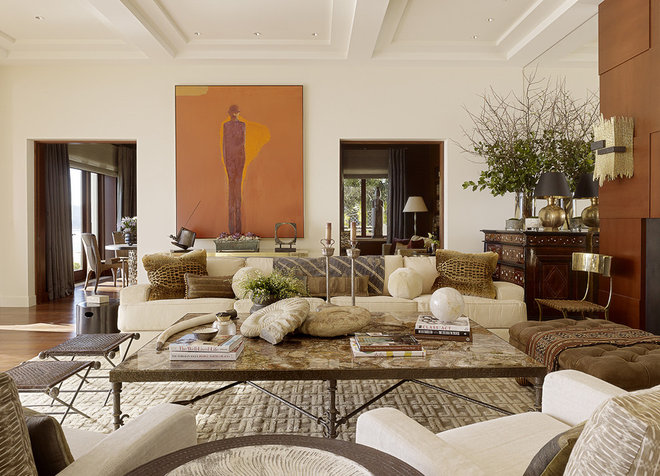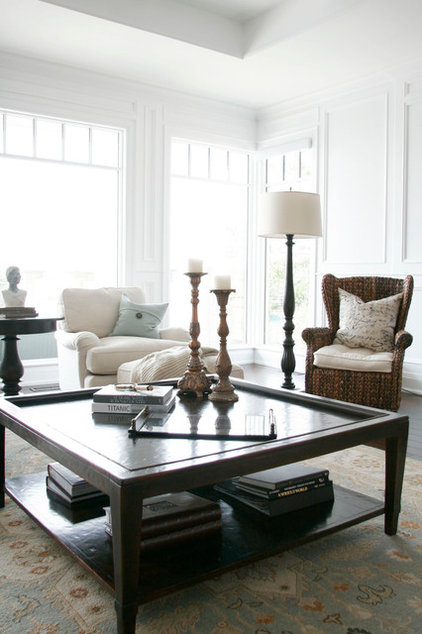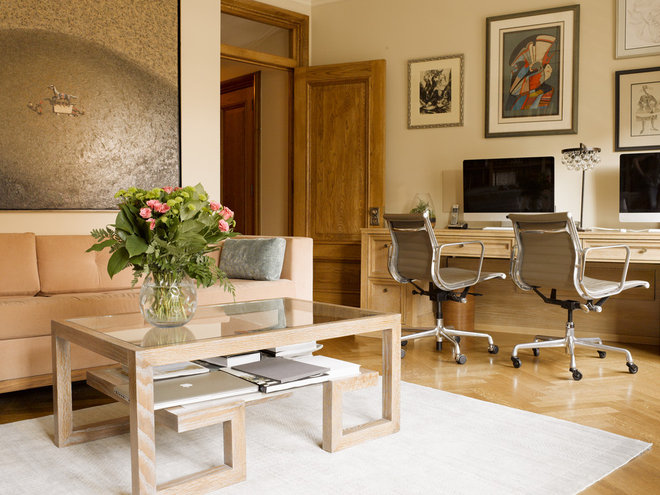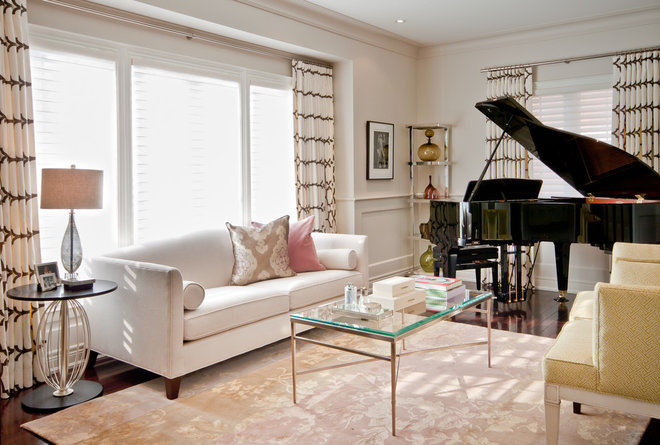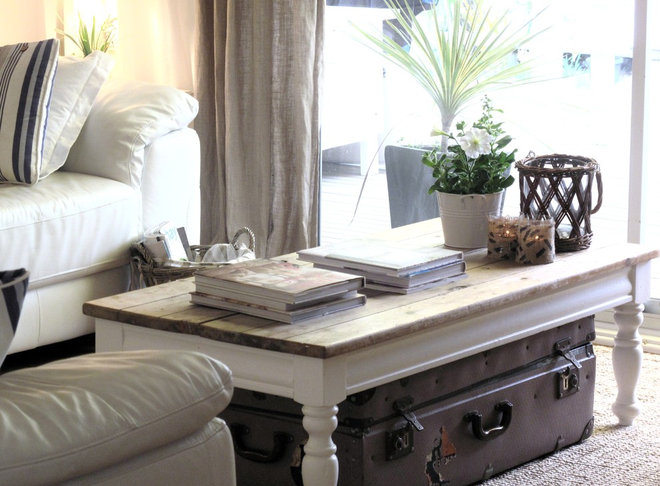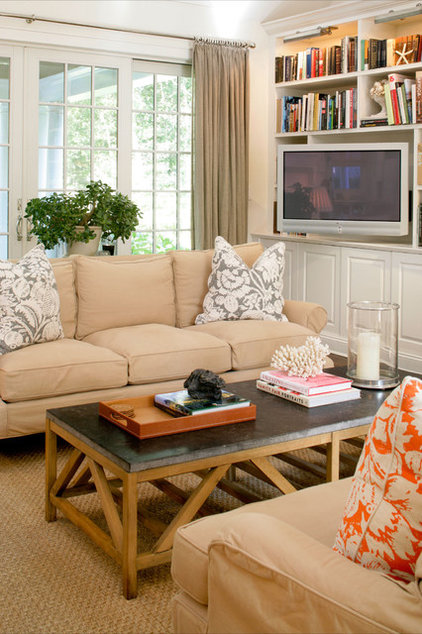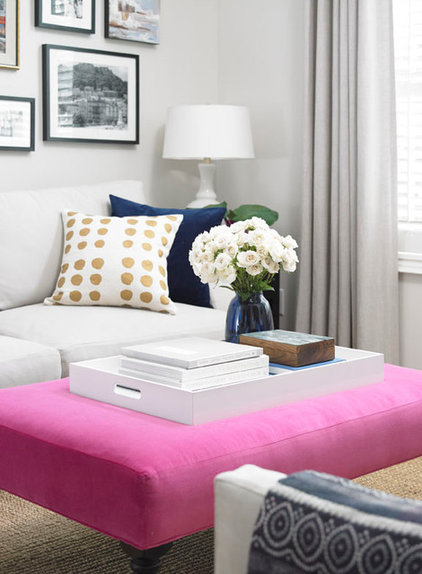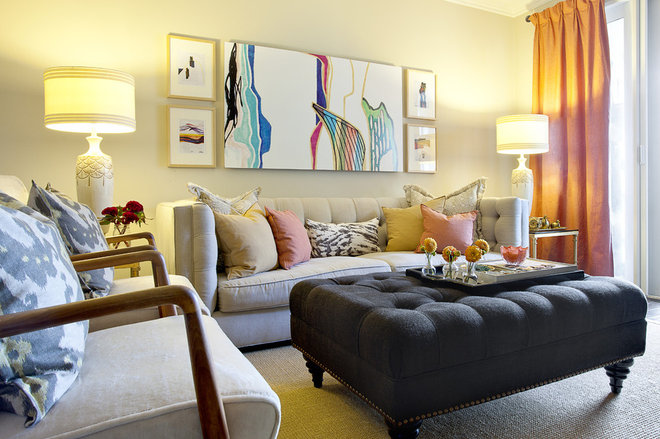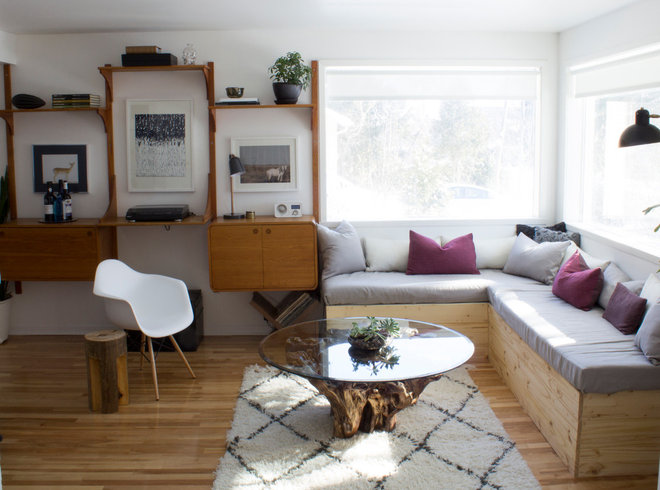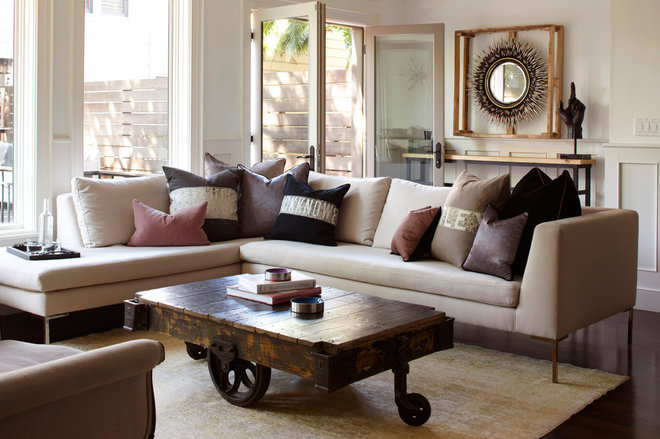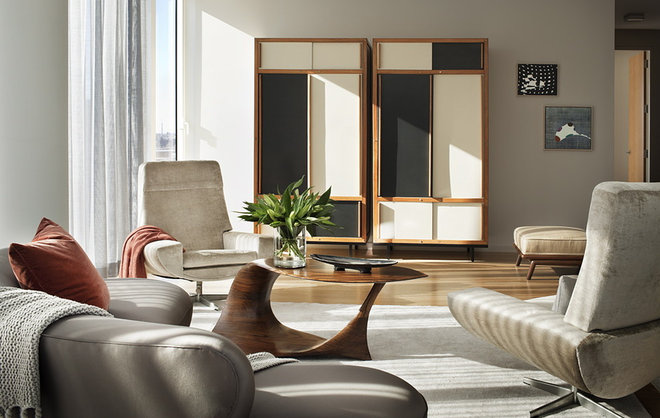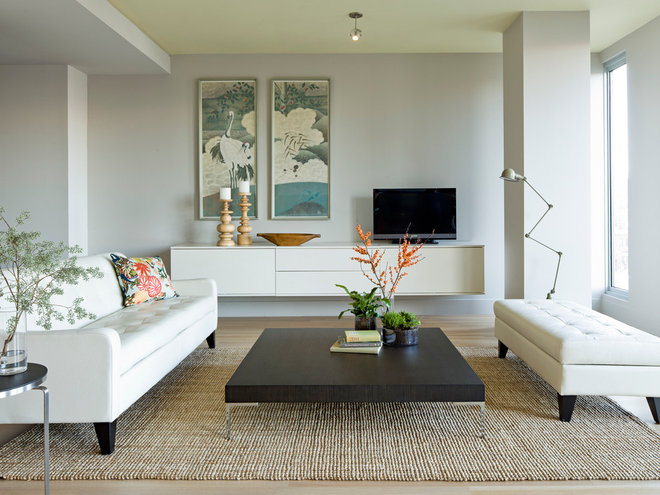A coffee table does a lot of work. It needs to hold books,
magazines, drinks, food — even games on game night. You might want to
put your feet up on it, or the kids might need a place for coloring.
Plus it’s usually smack dab in the middle of the room, where you can’t
miss it — so make sure it’s a good one.
Here are a few things to keep in mind when you’re picking a coffee table.
First think about what you need your coffee table to do for you, or what your room is missing, then pick a table that provides the solution.
Before
buying a table, mark the footprint with painter’s tape so you can see
the scale of the piece in the room and how that affects the surrounding
furniture. If you have a very large room and a large coffee table, you
can break up the scale of the table by flanking it with pairs of
ottomans or benches, as in this example. When there’s a party, they can
be moved out of the way for better circulation, but for everyday use
these extra seats help connect the sofa at one end and the pair of
chairs at the other end. Be sure to use a pair of ottomans — not just a
single one.
When you have two sofas or any
larger seating arrangement, a big coffee table might seem like the
obvious solution. But also consider a pair of matching coffee tables.
They will keep the focus off one large piece of furniture and let your
eye move around the room more easily.
One classic coffee table
size is 48 by 24 inches, so you can plan on that when thinking about
your furniture arrangement. A large coffee table is often double that:
48 inches square.
A lip edge or tray top on a
coffee table is always a smart choice if you have a tendency to spill
your coffee or have kids that will be using the coffee table for snacks
and drinks. They’re also good if you entertain often and don’t want to
worry about red wine getting spilled on your carpet.
Coffee
tables should be the same height as the surrounding seating, with 18
inches being a good average (although it will depend on your furniture).
If you select a coffee table with a lip, make sure the lip isn’t higher
than the adjacent seating, or you’ll end up hitting your drink against
the lip when you try to set it down. The idea is to put your drink down, not up.
If you don’t want the coffee
table to be the focus of the room, choose one with a glass top and a
finish that blends with others in the room, as in this example. This
will keep the eye interested in all the items in the room, not just one
layer of the design.
Metal bases with glass tops are
another good choice to keep rooms feeling open. They’re also great when
you have a special rug and don’t want to block views of it. Keep your
glass cleaner handy, though, as there is no way around fingerprints.
Keep
in mind that with most glass tops — if they are not inset — you’ll see a
green tint on the sides. You can order a speciality glass that doesn’t
have this tint, but it’s more expensive.
On the other hand, perhaps you want
your space to look cozier (and you need some storage). Stash baskets,
trunks and old suitcases under simple legged coffee tables to ground
spaces that are otherwise too open.
Solid tabletops usually have a
very square corner. If you have little kids or the circulation is tight,
allow extra space at the ends so it’s easier to get around the corners
without hitting your shins.
Go for color with an upholstered
coffee table, as it will draw people to the surrounding sofas and
chairs. Top it with a tray to hold books and other items (and to soften a
strong color, such as the pink in this image).
Choose your
fabric wisely, since people may want to put up their feet (and shoes).
Outdoor fabrics can be smart; steer clear of linen and fabrics with high
amounts of rayon or viscose.
Take a swatch home and test it out
with dirt, red wine or whatever you think your coffee table will
encounter, to make sure your fabric choice can handle it all.
Keep an upholstered ottoman 18
inches from a sofa or chair, so you can easily put up your feet, and
make sure the height is consistent with the surrounding seats.
If
you get a tufted ottoman, consider the depth of the tufts — especially
if you expect to eat on it. Crumbs will find their way into the tufting
and are not always easy to get out.
Round coffee tables aid
circulation, especially where there are many available seats, as in this
example. If not every seat can reach the table, make sure there’s
another surface at hand.
Using a vintage object for a
coffee table adds a bit of history — a story — to a room, and is one of
my favorite things to do. Make sure the piece is stable and all the
connections are secure. If you need to refinish the piece, ask the
vendor precisely what it’s made from, as this will help in the
refinishing process.
Another consideration is how it will sit on
your floor or rug, and if it will damage those surfaces. Splintered
table legs or rusty metal bases can scratch or stain the flooring.
Secondhand stores sometimes leave those areas unrefinished, so be sure
to check.
Sculptural wood coffee tables tell
their own story and can add a natural element and warmth to a room with
multiple upholstered pieces. Sealers and, of course, coasters can help
protect the surface from water damage.
Sometimes a coffee table that
isn’t the standard height or width is exactly what a room needs. In this
instance a very low coffee table creates a crisp horizontal plane in
the foreground, offsetting the long horizontal line of the credenza in
the background. A higher table would have blocked the view of the
credenza and competed with it; the varying heights add interest.
The best rule when buying a coffee table is to make sure the table works for your space as well as for your aesthetic.
